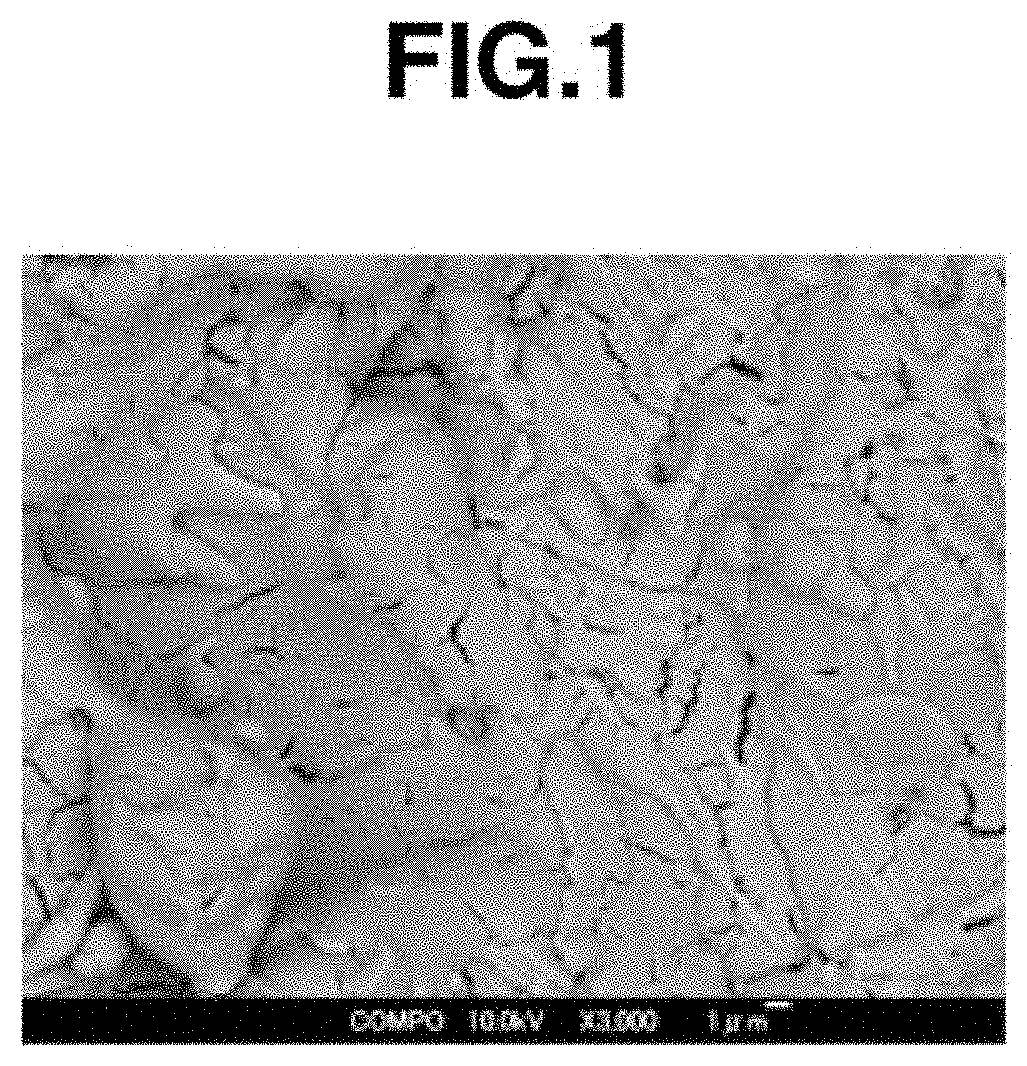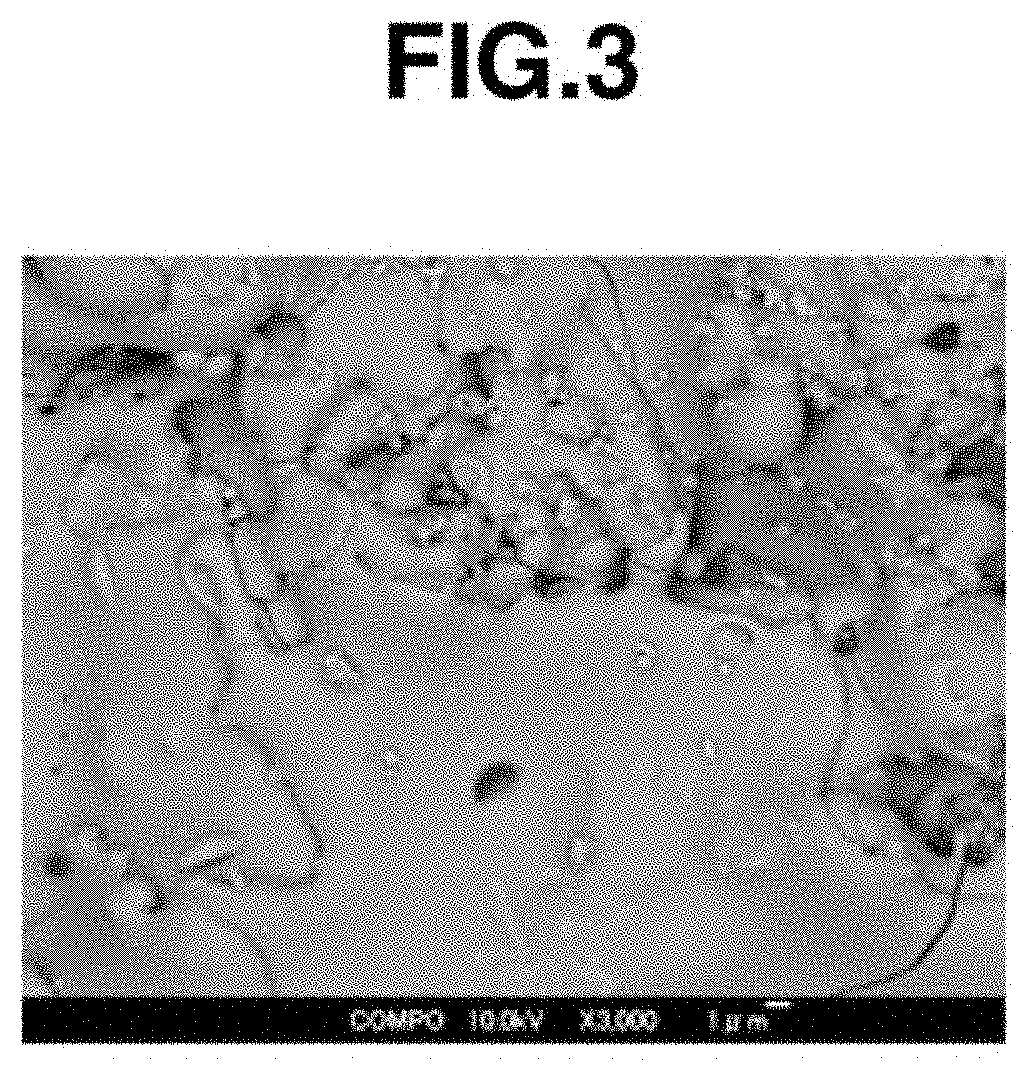Yttrium fluoride sprayed coating, spray material therefor, and corrosion resistant coating including sprayed coating
a technology of yttrium fluoride and spray coating, applied in the direction of molten spray coating, superimposed coating process, coating, etc., can solve the problems of high working cost and dusting, corrosion to proceed from the surface, and ceramic members, so as to enhance the effect of suppressing acid penetration, reduce the generation of particles, and excellent corrosion resistan
- Summary
- Abstract
- Description
- Claims
- Application Information
AI Technical Summary
Benefits of technology
Problems solved by technology
Method used
Image
Examples
example 1
[0058]A 6061 aluminum alloy substrate of 20 mm squares and 5 mm thick was degreased on their surfaces with acetone and roughened on one surface with corundum abrasive grains. On the roughened surface of the substrate, an yttrium oxide sprayed coating of 100 μm thick was deposited as the lower layer by using an atmospheric plasma spraying system, yttrium oxide powder (single angular particles) having an average particle size (D50) of 8 μm, and argon and hydrogen gases as the plasma gas, and operating the system at a power of 40 kW, a spray distance of 100 mm, and a buildup of 30 μm / pass. On image analysis, the lower layer had a porosity of 3.2%. The porosity measuring method is the same as the measurement of a porosity of a surface layer to be described below.
[0059]Separately, a spray powder (spray material) was prepared by mixing 95 wt % of yttrium fluoride powder A having an average particle size (D50) of 1 μm with 5 wt % of yttrium oxide powder B having an average particle size (D...
example 2
[0067]A 6061 aluminum alloy substrate of 20 mm squares and 5 mm thick was degreased on their surfaces with acetone and roughened on one surface with corundum abrasive grains. On the roughened surface of the substrate, an yttrium oxide sprayed coating of 100 μm thick was deposited as the lower layer by using an atmospheric plasma spraying system, yttrium oxide powder (granulated powder) having an average particle size (D50) of 20 μm, and argon and hydrogen gases as the plasma gas, and operating the system at a power of 40 kW, a spray distance of 100 mm, and a buildup of 30 μm / pass. On image analysis as in Example 1, the lower layer had a porosity of 2.8%.
[0068]Separately, a spray powder (spray material) was prepared by mixing 90 wt % of yttrium fluoride powder A having an average particle size (D50) of 1.7 μm with 10 wt % of yttrium oxide powder B having an average particle size (D50) of 0.3 μm, granulating the mixture by spray drying, and firing at 800° C. in a nitrogen gas atmosphe...
example 3
[0070]An alumina ceramic substrate of 20 mm squares and 5 mm thick was degreased on their surfaces with acetone and roughened on one surface with corundum abrasive grains. On the roughened surface of the substrate, an yttrium oxide sprayed coating of 100 μm thick was deposited as the lower layer by using a detonation spraying system, yttrium oxide powder having an average particle size (D50) of 30 μm, and oxygen and ethylene gases, and operating the system at a spray distance of 100 mm and a buildup of 15 μm / pass. On image analysis as in Example 1, the lower layer had a porosity of 1.8%.
[0071]Separately, a spray powder (spray material) was prepared by mixing 85 wt % of yttrium fluoride powder A having an average particle size (D50) of 1.4 μm with 15 wt % of yttrium oxide powder B having an average particle size (D50) of 0.5 μm on a ball mill, and firing at 800° C. in a nitrogen gas atmosphere. The spray powder thus obtained was measured for an average particle size (D50), with the r...
PUM
| Property | Measurement | Unit |
|---|---|---|
| thickness | aaaaa | aaaaa |
| porosity | aaaaa | aaaaa |
| thickness | aaaaa | aaaaa |
Abstract
Description
Claims
Application Information
 Login to View More
Login to View More - R&D
- Intellectual Property
- Life Sciences
- Materials
- Tech Scout
- Unparalleled Data Quality
- Higher Quality Content
- 60% Fewer Hallucinations
Browse by: Latest US Patents, China's latest patents, Technical Efficacy Thesaurus, Application Domain, Technology Topic, Popular Technical Reports.
© 2025 PatSnap. All rights reserved.Legal|Privacy policy|Modern Slavery Act Transparency Statement|Sitemap|About US| Contact US: help@patsnap.com



